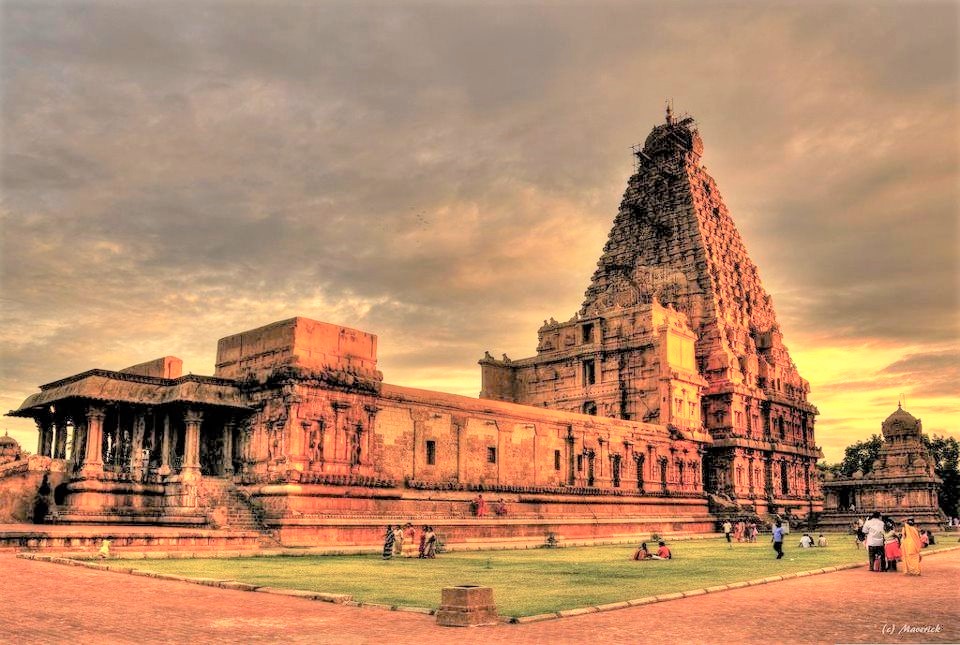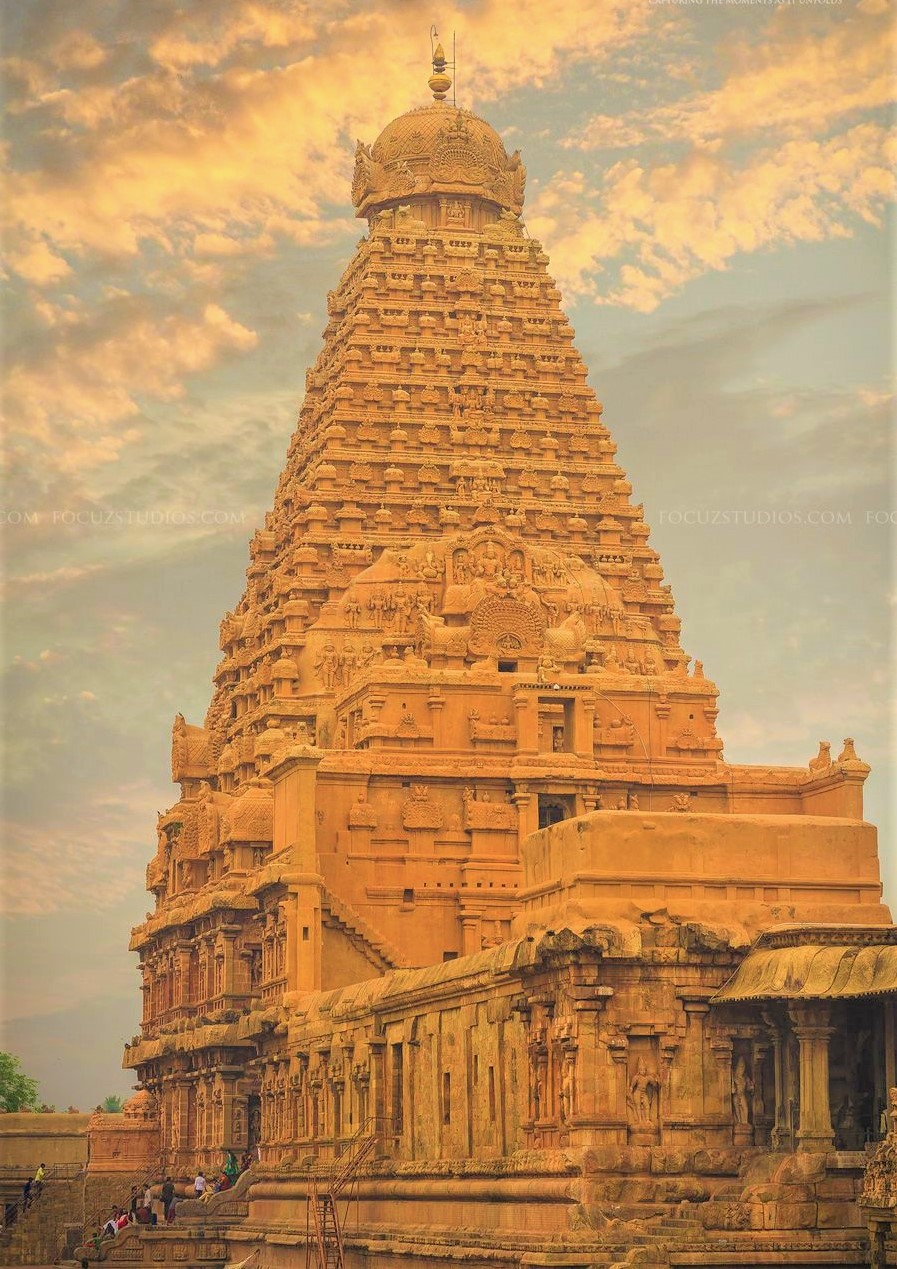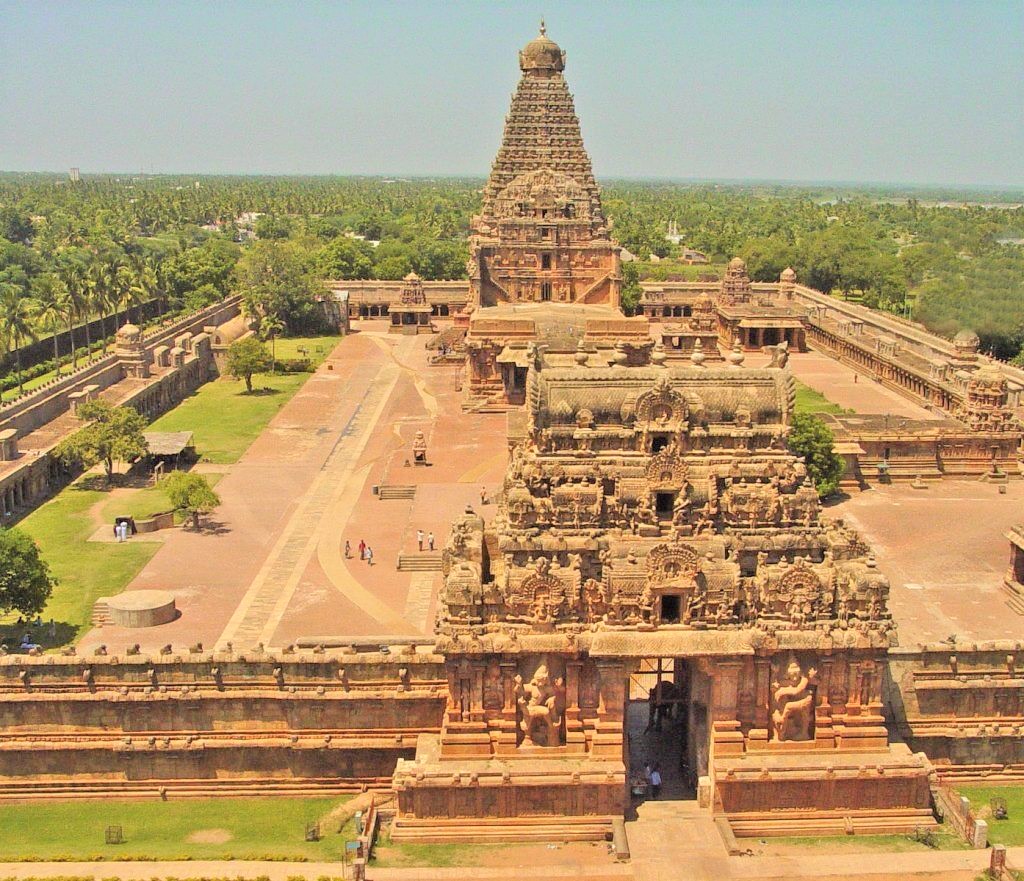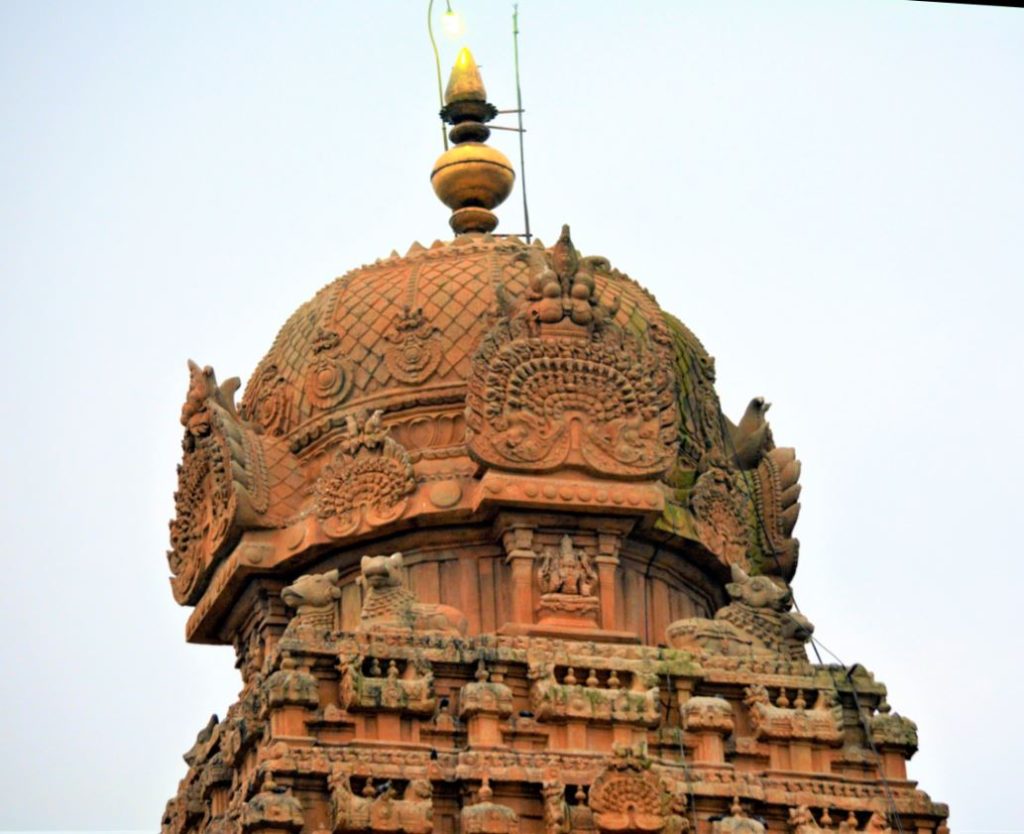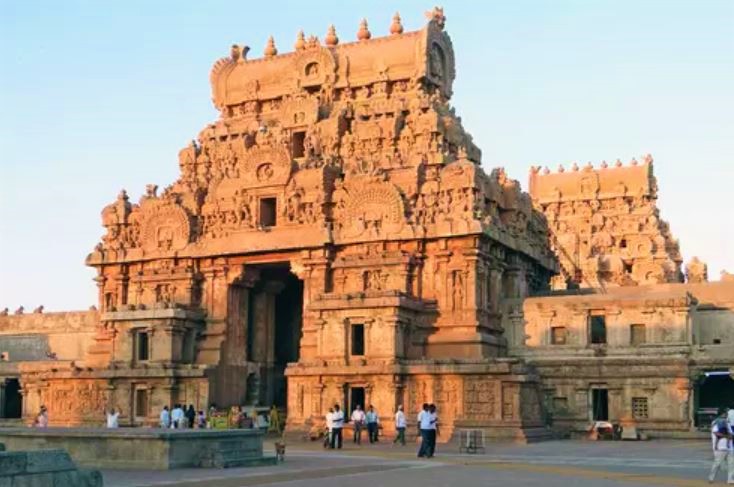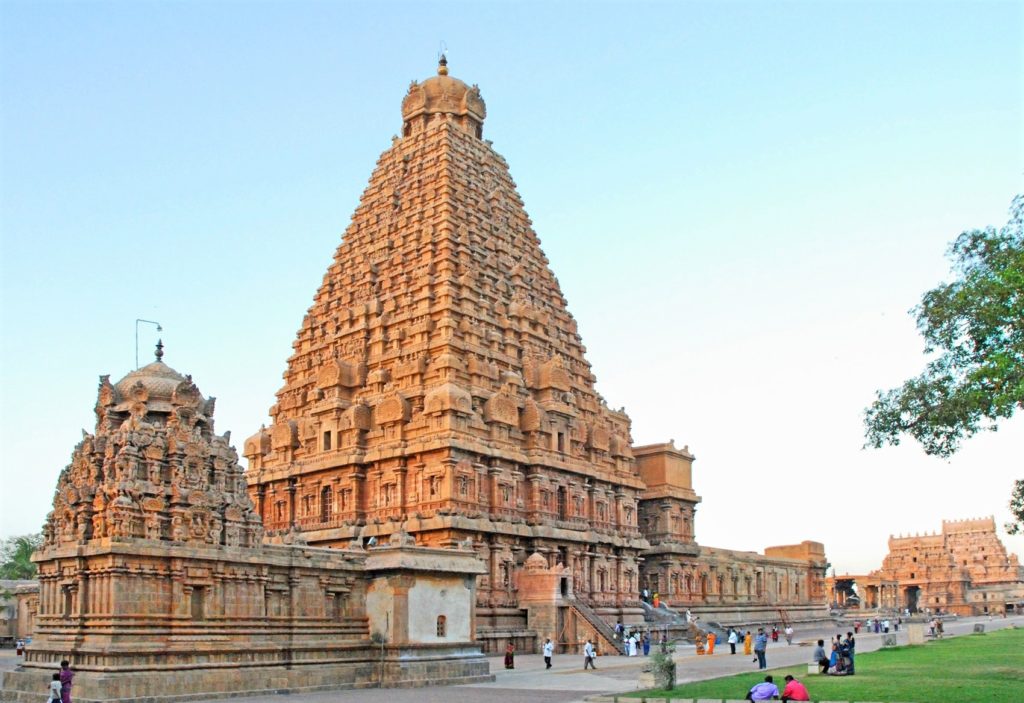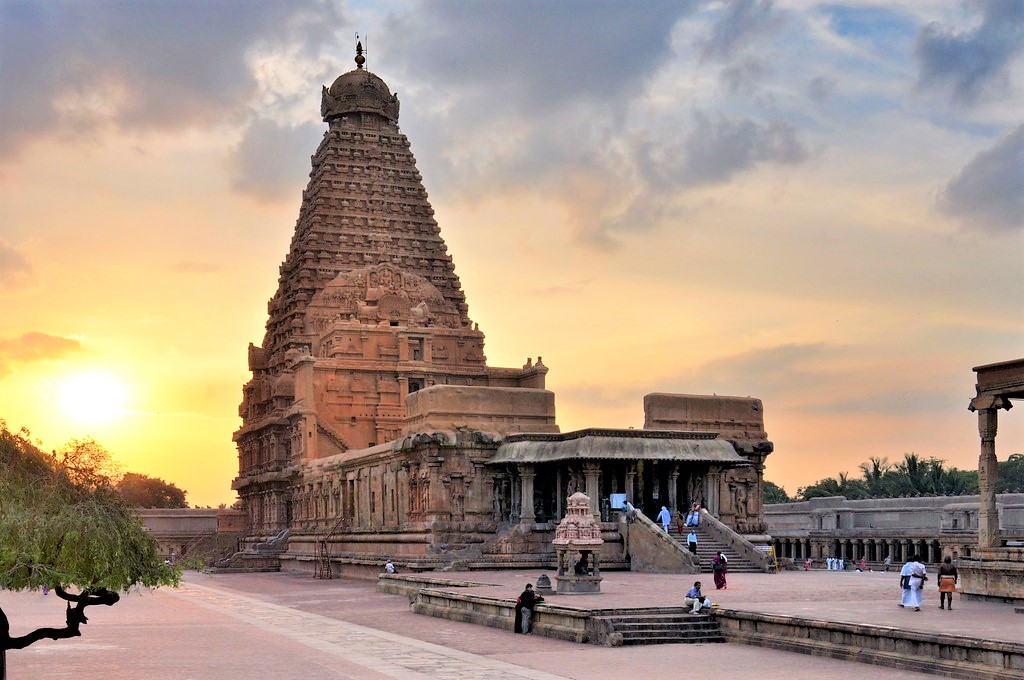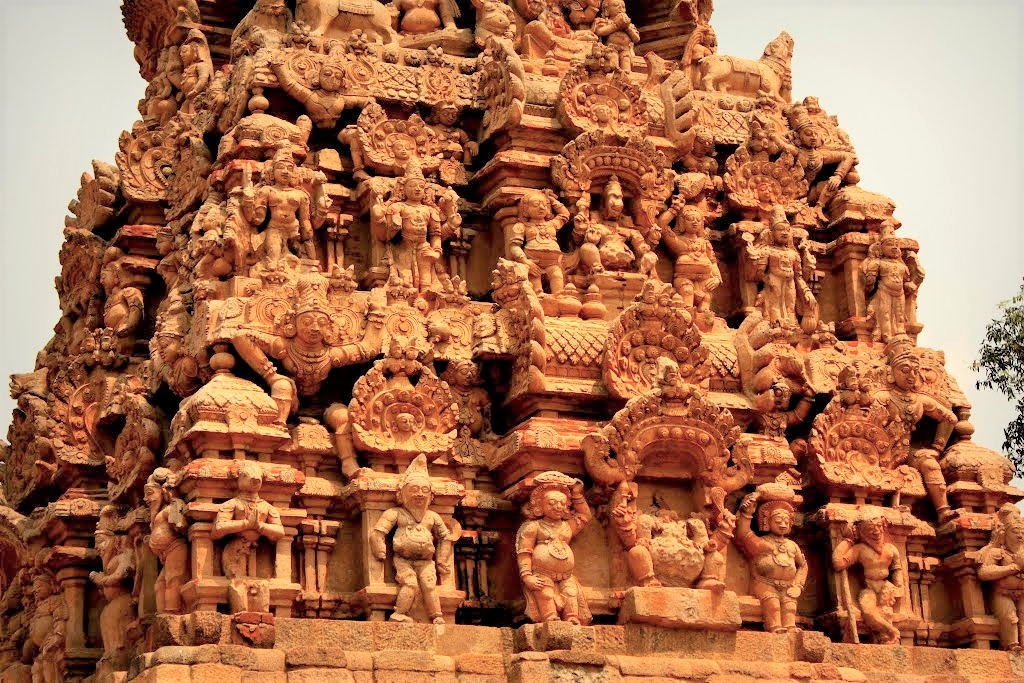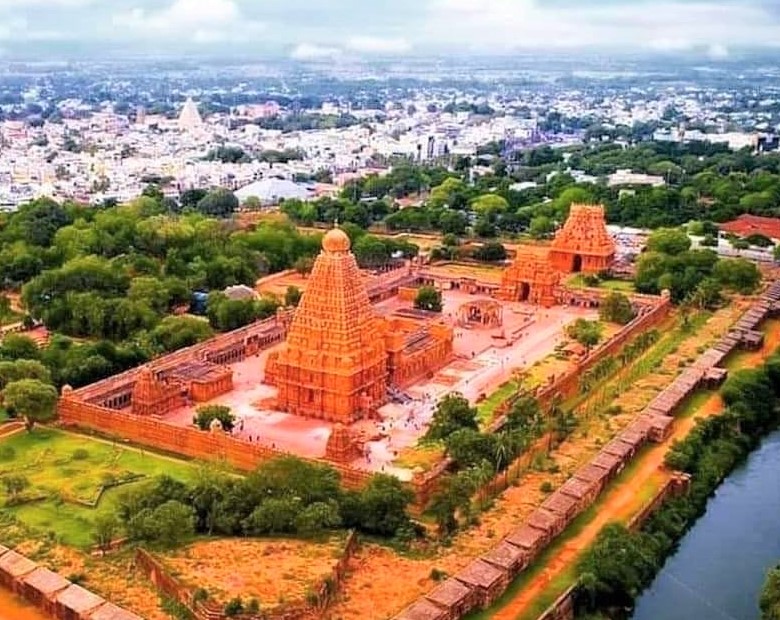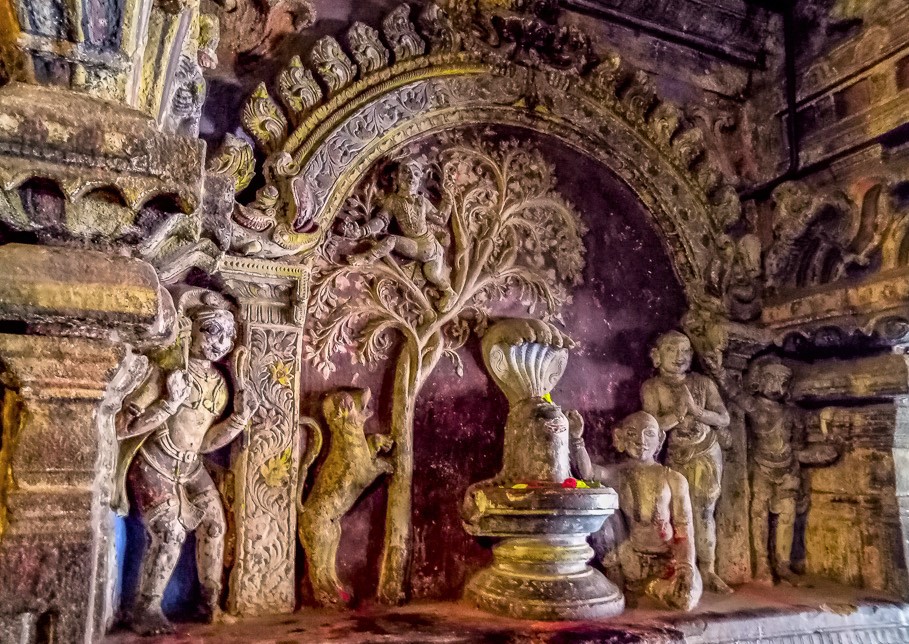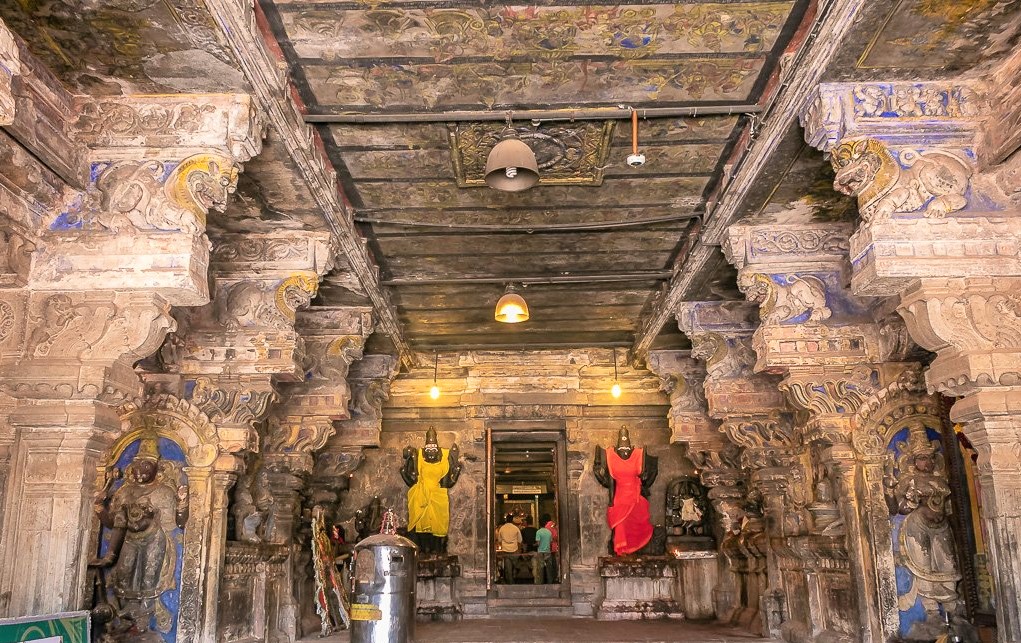Brihadeshwara Temple, Thanjavur, Tamil Nadu

Posted by Shivam Singh
19th June, 2020
Built by Tamil King RajaRaja Chola I in 1010 AD, Brihadeshwara Temple is an ancient hindu temple located in South bank of Kaveri river at Thanjavur in Tamil Nadu.
This thousand year old temple, also known as Rajarajeswaram and Periya Kovil, is now part of the UNESCO World Heritage Site adding to its exceptional historical and cultural value.
The deity of the temple is Lord Shiva—in his dancing pose—who is called the Nataraj.
It is one of the largest South Indian temples and an exemplary example of a fully realized Dravidian architecture.
Built using over 1,30,000 tons of granite, this temple is a magnificent architectural construct that will never stop surprising anyone visiting the temple.
The vimana tower (structure over the garbhagriha or inner sanctum) is one of the tallest in South India. The temple has a massive colonnaded prakara (corridor) and one of the largest Shiva lingas in India.
The architecture of the temple is done so cleverly that the temple casts no shadow on the ground when the sun is at its peak during afternoon. This is a phenomenon that attracts thousands of tourists and architectural enthusiasts from across the world to unravel the architectural mystery of the temple.
The fact that granites are not available within the 100-mile radius of the temple only makes it all the more astonishing. Granite is as heavy a stone to carry, as it is to carve, but none of that seemed to have shied the king from realizing the temple the way he envisaged.
The topmost structure of the temple, called Vimana, weighs around 80 tons and it is a mystery how the builders got it up there.
There are several musical pillars also at the temple, which make different sounds when taped.
Reaching a height of 63 metres, it is the tallest temple building in India. The entire rectangular complex measures approximately 140 x 75 metres and is surrounded by a wall with regular interior niches.
Inside the compound are various secondary shrines and a monumental double gateway entrance (gopuras).
The granite tower (vimana), which rises in thirteen diminishing levels above the sacred garbhagriha (inner shrine), is topped by a dome structure which rests on a single 7.7 m square granite block weighing around 80 tons.
The building has a front entrance porch (mandapa) with 36 columns, and there are two additional entrances at the base of the tower on each side. All three entrances are decorated with guardian figure sculptures, some double life-size, and are approached by a richly carved monumental flight of stairs.
The hundreds of niches of the exterior are decorated with sculpture of divine figures (murti) – especially Shiva and Devi, lion heads (kirttimukha), and fan shapes.
Another breathtaking thing that will sure stupefy the visitor is the magnificent Nandi statue built at the temple; it is about two meters in height, six meters in length and two-and-half meters in width, and weighs around a whopping 20 tons for a statue built from a single stone.
Chola Dynasty
The Chola dynasty was a Tamil dynasty of southern India, one of the longest-ruling dynasties in the world’s history. The earliest datable references to the Chola are in inscriptions from the 3rd century BCE left by Ashoka, of the Maurya Empire.
As one of the Three Crowned Kings of Tamilakam (ancient Tamil country), along with the dynasties of Chera and Pandya, the Chola dynasty continued to govern over varying territory until the 13th century CE.
Despite these ancient origins, the period when it is appropriate to speak of a “Chola Empire” only begins with the medieval Cholas in the mid-9th century CE.
The heartland of the Cholas was the fertile valley of the Kaveri River, but they ruled a significantly larger area at the height of their power from the later half of the 9th century till the beginning of the 13th century.
During the period 1010–1153, the Chola territories stretched from the islands of the Maldives in the south to as far north as the banks of the Godavari River in Andhra Pradesh. Rajaraja Chola conquered peninsular South India, annexed parts of which is now SriLanka and occupied the islands of the Maldives.
His successor, Rajendra Chola sent a victorious expedition to North India that touched the river Ganges and defeated the Pala ruler of Pataliputra, Mahipala. He also successfully invaded cities of Srivijaya of Malaysia and Indonesia. The Chola fleet represented the zenith of ancient Indian sea power.
The Chola dynasty went into decline at the beginning of the 13th century with the rise of the Pandyan dynasty, which ultimately caused their downfall.
The Cholas left a lasting legacy. Their patronage of Tamil literature and their zeal in the building of temples has resulted in some great works of Tamil literature and architecture. The Chola kings were avid builders and envisioned the temples in their kingdoms not only as places of worship but also as centers of economic activity
Brihadeshwara Temple Design
The Brihadeshvara temple plan and development utilizes the axial and symmetrical geometry rules. It is classified as Perunkoil (also called Madakkoil), a big temple built on a higher platform of a natural or man-made mounds.
The temple complex is a rectangle that is almost two stacked squares, covering 240.79 metres (790.0 ft) east to west, and 121.92 metres (400.0 ft) north to south.
In this space are five main sections: the sanctum with the towering superstructure (sri vimana), the Nandi hall in front (Nandi-mandapam) and in between these, the main community hall (mukhamandapam), the great gathering hall (mahamandapam) and the pavilion that connects the great hall with the sanctum (ardhamandapam).
The main temple was laid out on a precise plan of 16 x 16 squares, a design known as padmagarbhamandala in the Dravida architecture of southern India.
The interior contains the typical passageway for worshippers to perform a circumambulation, in this case on two levels. The garbhagriha contains a 4-metre tall Shiva linga (phallus). There is a snapana platform, too, for the ritual bathing of the God located within a portico (ardhamandapa).
The temple complex integrates a large pillared and covered veranda (prakara) in its spacious courtyard, with a perimeter of about 450 metres (1,480 ft) for circumambulation.
Rararaja I (r. 985-1014 CE) and his son Rajendra I (r. 1012-1044 CE) both filled the temple with bronze sculpture, including images of the kings and their queens, upon which were hung precious jewellery. As indicated in inscriptions, the Cholas also paid for regular offerings of incense, food, and flowers and ensured that the temple was well-maintained by attendants and no fewer than 400 dancing girls – an increasingly important aspect of Hindu worship from that time onwards.
The gopuras at Thanjavur are two huge monumental gateways which lead to the compound dominated by the Brihadishvara temple.
Built on the eastern side of the complex, the outer gopura has five stories and the inner one three. Each gopura has a centrally positioned entrance giving access to a single two-storied chamber on each side of it. The gopuras at Thanjavur are unique because each façade (interior and exterior) is not identical as in later examples.
The outer facades each have two large dvarapalas (door guardians) as well as figure sculpture in their many niches and large decorative shapes. The top of each gopura is crowned with a massive shala or barrel-vaulted roof. Eventually at other sites gopuras would become even larger and more spectacular than the temples themselves.
Other buildings in the compound include the Nandi mandapa portico, located directly between the gopuras and the Brihadishvara temple. A later addition to the site located at the opposite end to the gopuras is the Subrahmanya Shrine, built in c. 1750 CE.
The Brihadisvara temple continued the Hindu temple traditions of South India by adopting architectural and decorative elements, but its scale significantly exceeded the temples constructed before the 11th century. The Chola era architects and artisans innovated the expertise to scale up and build, particularly with heavy stone and to accomplish the 63.4 metres (208 ft) high towering vimana.
References
Wikipedia – The Free Encyclopedia
Mark Cartwright’s article in Ancient History Encyclopedia
UNESCO’s listing of Brihadisvara Temple on its website
Google Images
Pinterest Images
Text is available under the license: Creative Commons Attribution-NonCommercial-ShareAlike; additional terms may apply. This license lets others remix, tweak, and build upon this content non-commercially, as long as they credit the author and license their new creations under the identical terms.
If you think any of the content here is not as per the copyright laws, please let us know via email or contact form on home page, content will be removed from page.
